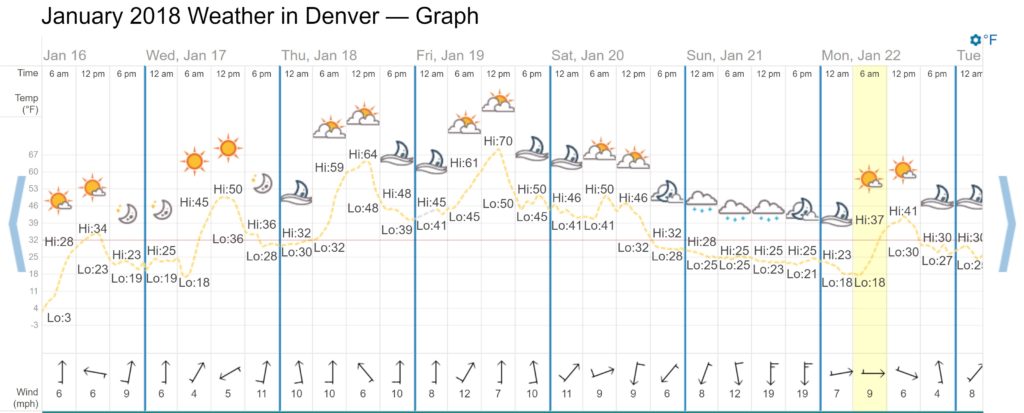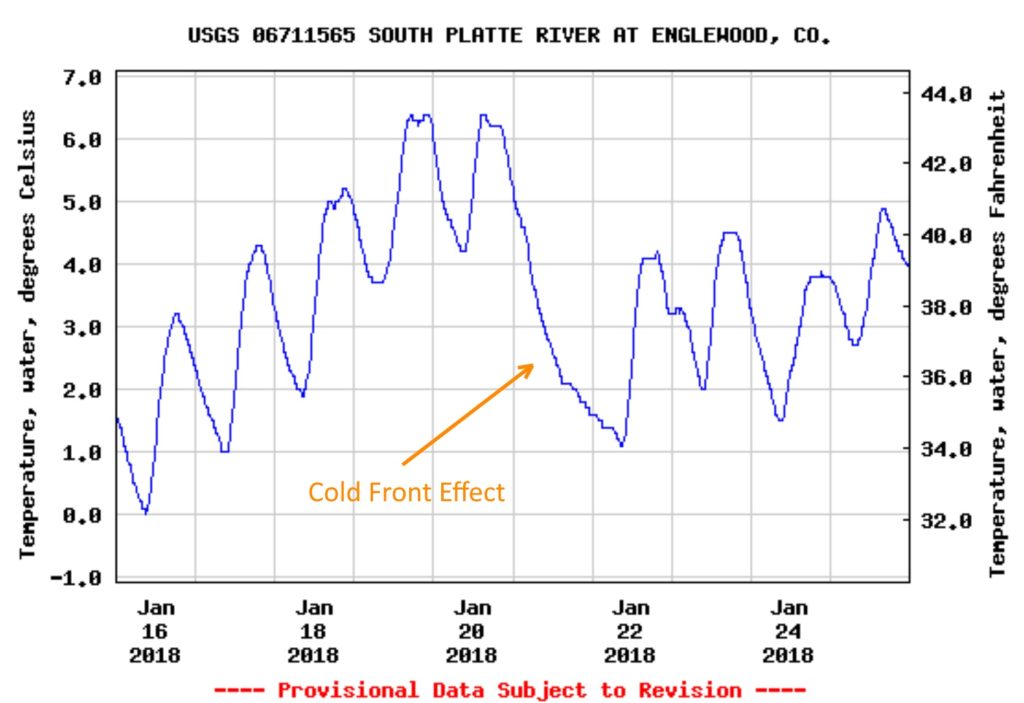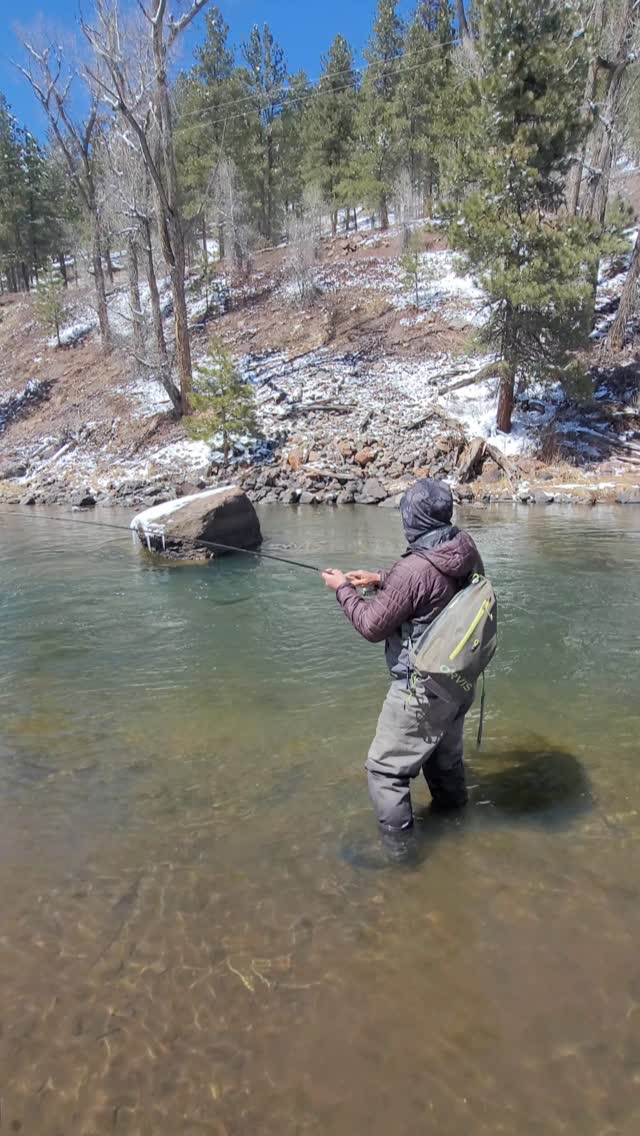Water temperature is a variable that can often be overlooked by the casual fly fisherman. However, understanding it’s effects can help you improve as an angler, and optimize your fishing time. Oftentimes, anglers are locked into the days and times they fish… “I took Friday off.” But what happens when a big cold front is supposed to settle in on Thursday? This post will cover the effects of weather and other atmospheric changes as they relate to water temperature in a river.
The list of possible variables that can cause water temperature changes is long, but for the purpose of this exercise, I’m going to eliminate a few of them. Some of the more important ones include stream flow, tributary influence, melting snow, and rain. In this example, the river (DSP) was running between 100-150 CFS which is typical for this time of year. Heavy stream flows will lessen the effect of air temperature, but usually big changes in weather need to be taken into consideration. Fortunately, between knowing your weather forecast, and visiting a few websites, you can best choose when to get out and fish.
I frequently fish my local river, The Denver South Platte, for carp, even in the winter. Over the years I’ve noticed that the fish seem most active and most likely to feed during warming trends in those winter months. In the weather screenshot below, the dashed yellow line shows actual air temperatures for a date range that had such a warming pattern. This was followed by a big drop in temps as a cold front settled in on January 20th and 21st.

Assuming this was a forecast, you ideally will be trying to fish on January 18th or 19th… so taking Friday off would make a lot of sense. But let’s assume you have to wait until the weekend to fish, and worse yet, you can’t get out Saturday (Bed, Bath, and Beyond), so Sunday is your only possibility. Yuck! Let’s see what effect this cold front had on the local water temperature.

The first thing to notice in the above graph is the daily oscillation of temperature caused by normal diurnal warming from the sun. Next, notice how the oscillations are happening along an upward slope early in the graph, from the 16th to the 20th. The plotted temperature line breaks down on the 21st (Sunday) and no diurnal warming occurs. In fact, we see the water drop from an adequate 43ºF to a frosty 34ºF. The fish will not be happy! After the cold front settles in, the water temperature stays cooler in the following days. Warmwater species like carp and smallmouth bass will be most affected, but trout and other coldwater species will be put off also.
So if you insist on getting out that Sunday, or the days that follow, you must adjust you expectations accordingly. Best bet, stay home. If you have a buddy that is pressuring you, maybe consider joining the madness. After all, the exercise and camaraderie are important, and you can spend time looking at the ducks and geese… who are also cold.
The water temperature graph above was taken from the USGS website, one of the very useful online tools that I will cover in an upcoming post.


























